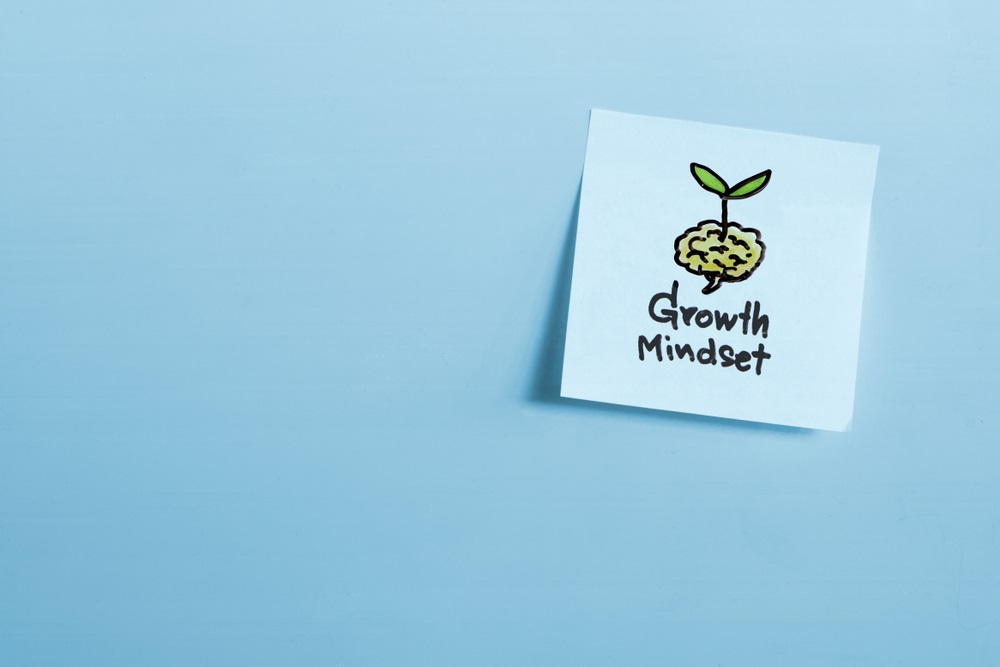Educators who help students develop growth mindsets can change the trajectory of a student’s academic and personal success. This is an incredibly important undertaking for any teacher, helping young people understand their potential and shed the doubts and anxiety that may be holding them back.
Carol Dweck, Ph.D., developed the theory of a growth mindset versus a fixed mindset in the groundbreaking book Mindset: The New Psychology of Success. In the nearly two decades since the Stanford psychologist published her work, successful people from all walks of life, from educators to athletes to doctors to artists, have applied these concepts to transform their lives.
By fostering a growth mindset in the classroom, teachers enable students to grow and develop in ways they may have never thought possible.
What Is Growth Mindset Theory?
To understand growth mindset theory, you must consider it along with its opposite: a fixed mindset. A person with a fixed mindset thinks that our natural talents, skills, and abilities are, in most ways, set in stone—that these things are essentially innate from birth.
Fixed mindsets hold people back from their full potential, as they become too consumed by wanting to avoid the outward appearance of failure.
A growth mindset, on the other hand, is one that always sees potential for development. Those with a growth mindset believe ability can be nurtured and developed through effort. While they may not necessarily believe practice makes perfect, they would say practice makes possible.
The growth mindset is marked by a strong desire to learn that is not hindered by preconceived notions of intelligence. A person with a growth mindset is not scared to try something new or risk the vulnerable feeling of being seen as lacking in intelligence or ability.
10 Growth Mindset Examples to Develop Success in School
Teachers have daily opportunities to nurture and develop growth mindsets in their students. By adopting these simple yet effective tips in the class environment, students will be encouraged to move away from the fixed mindset of doubt or fear of failure and instead embrace a willingness to try new things and grow in their academic and social skills.
A growth mindset does not just mean better grades—it can mean better relationships with friends and family, better coping skills in times of stress, and better preparation for future careers.

1. Add “Yet” to Your Daily Vocabulary
“Yet” is one of the single most important words in a growth mindset. When a student frustrated with algebra says, “I just don’t get these formulas,” respond with, “You just don’t get them yet.” Remind students that what they do not know will change as they study and practice.
2. Make Learning a Cooperative Exercise
The more you can structure your class so that students work together in groups, the more opportunities students will have to learn how to connect with others for help. This reinforces the value of asking others for help and reduces any stigma or shame associated with that.
Often, even the most successful people will face failure if they are afraid to ask for help when it comes to a new skill. Growth mindsets value the benefit of surrounding yourself with others whose talents and skills may differ from your own.
3. Slow It Down
Help your students see that racing to the finish line is not always the best route—unless it’s the 100-meter dash! Help them understand that working through a process slowly and comprehending each step is better than rushing to complete an assignment just to be the first to finish. Ultimately you want your students to learn to embrace and value the process over the result.
4. Make Praise More Specific
Even in our mistakes, there are opportunities for praise, such as “Susan, I am impressed with how you handled that difficult passage in the poem. Even though a few words were difficult for you to pronounce, you took your time to sound them out and did a great job.”
5. Explain Goals Clearly
Students need to understand the “why” behind the goals you set in your classroom, so take the time to explain them clearly, and give students ample time to ask questions. Understanding goals fully and the process to achieve them will contribute to their personal growth.
6. Document Successes
One of the best ways to help students see their own growth and developing ability is by having them document milestones. Start a success notebook or journal where students can reflect on challenges they have overcome, new skills they have mastered, or mistakes they have corrected.
By teaching students to celebrate correcting mistakes, teachers illustrate that we all make mistakes and can ultimately spin something positive out of fixing them.
7. Avoid Empty Statements to Students
“Try harder” or “you can do it” can feel defeating for a struggling student. Coach them with specific tips and reminders, such as “what shortcut in your notes from last week could you use to help with these kinds of equations? Can you find it in your notes and see if it can be applied here?” Give them tools to correct mistakes instead of empty phrases that may leave them feeling discouraged.
8. Model Your Own Growth Mindset
One of the best ways teachers can help students see the value of a growth mindset is by sharing examples from their own lives. Be open with students about ways you persevered in learning a new skill or overcoming a challenge. This can be done with humor and levity, too!
You might share how much you wanted to learn to skateboard as a child and didn’t give up even after months of scraped knees and a bruised tailbone. Teachers can encourage a growth mindset with their own tales of grit, hard work, and determination.
9. Make Every Challenge an Opportunity
Teach students to see possibilities for growth any time they are challenged. This can be part of your lesson planning, but it can also be done in the moment when things go awry. For example, suppose your video equipment is malfunctioning on the day you were going to show the students a scene from a play they were reading.
A creative problem solver will quickly have the students act the scene out instead! Teach them to look for solutions rather than dwelling on frustration. Every challenge or frustration can ultimately become an opportunity for growth and development; showing students perseverance is critical to a growth mindset.
10. Ask for More
Another effective way to develop growth mindsets is to consistently ask students to add more to their answers. Challenge them to expand on what they share in class and add more description and color to what they are explaining.
These are just a few ways to implement growth mindset habits in your classroom. By consistently using this approach and incorporating these growth mindset activities into the learning process, you will help your students unlock their full potential and see greater success and personal growth both in and outside school.




